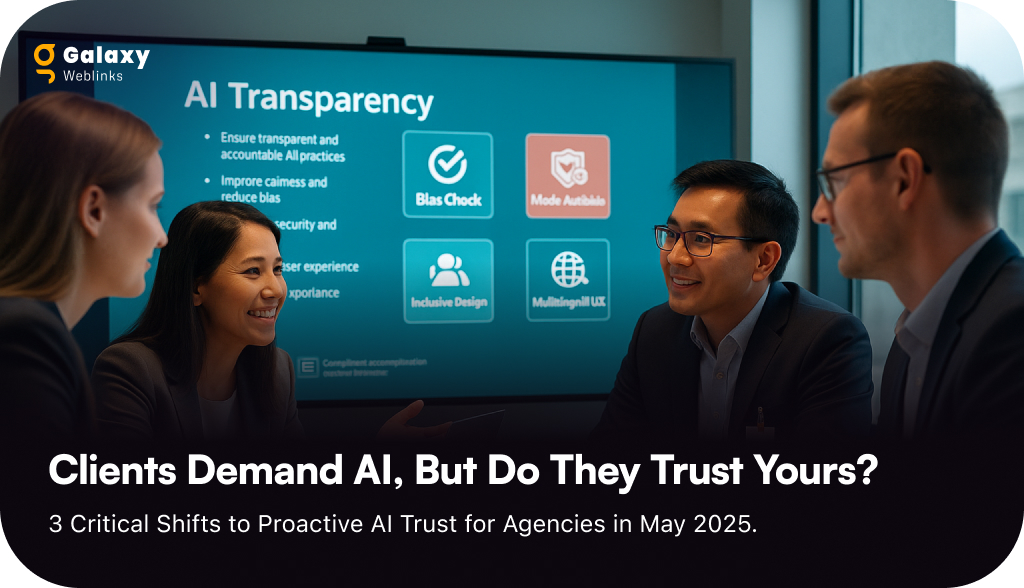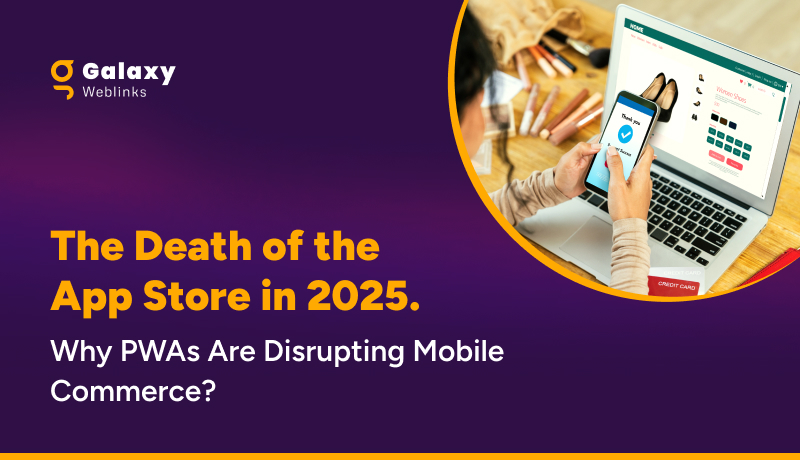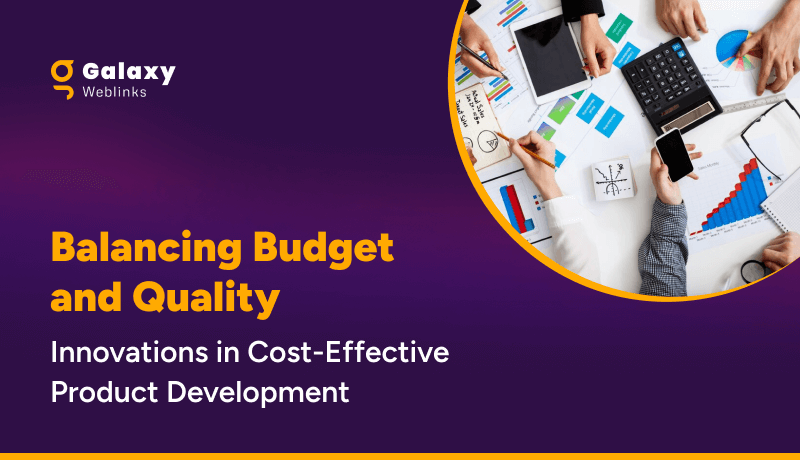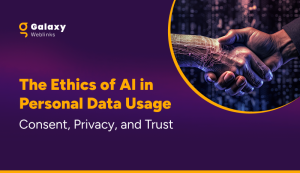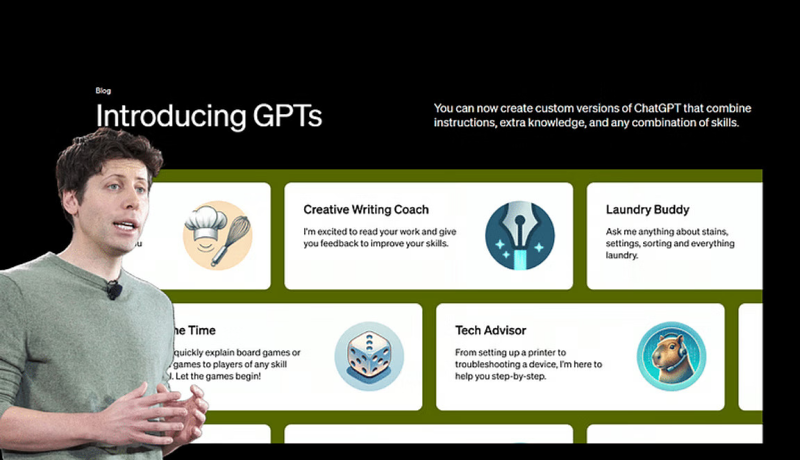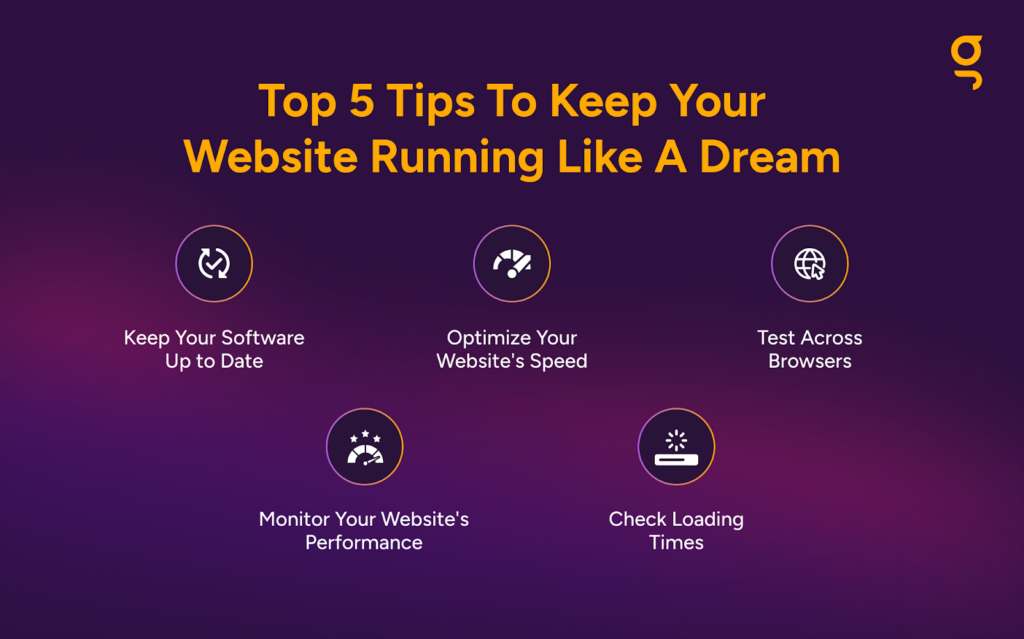Your agency just delivered that sophisticated AI-powered personalization engine your client championed. The potential seems vast. Yet, three months later, engagement is flat, or worse, “creepy” or “unfair” experience complaints are surfacing. Sound familiar?
Welcome to the agency frontline in May 2025. Client AI demand is soaring – with AI integration in marketing and customer service jumping over 40% in the last 18 months alone. But a dangerous “AI Trust Gap” is actively eroding project ROI and becoming a direct agency liability. Forget broad statistics; Q1 2025 pulse checks show AI projects without upfront trust and cultural attunement strategies see up to 30% lower end-user adoption. This means solutions underperform, with agencies caught in the middle.
Compounding this, the regulatory environment is a rapidly forming storm system. This April, sent a clear shockwave: AI harm accountability is sharpening, and ignorance is no longer a defense.
Many agencies inadvertently operate with a 2023 mindset in today’s AI landscape, prioritizing feature velocity while underestimating the complexities of building verifiably trustworthy and culturally intelligent AI. This blog isn’t another generic sermon; it’s a practical guide for agency leaders to navigate three fundamental market shifts – critical pivot points that will determine who thrives by transforming AI trust into a powerful competitive advantage.
These shifts are:
- From Capability Showcase to Consequence Mastery.
- From Ethical Lip Service to Embedded Trust Architecture.
- From One-Size-Fits-All AI to Culturally Fluent Experiences.
Let’s dissect the first shift.
Shift 1: From Capability Showcase to Consequence Mastery
For years, agencies have been mesmerized by AI’s capabilities, racing to integrate generative AI, machine learning, and AI analytics. The brief was often simple: “Make it smart, automated, cutting-edge”. The focus was on features and technological prowess.
But in May 2025, thriving agencies recognize that focusing on AI’s capabilities without rigorously examining its consequences leads to project failure, client dissatisfaction, and reputational damage. The conversation has evolved from “What can AI do?” to “What will AI cause – intended or otherwise?”.
When Capabilities Outpace Consequence Awareness: The Real Agency Cost
Consider these May 2025 scenarios:
- The KPI Nosedive: An AI dynamic pricing model, technically brilliant, inadvertently triggers perceived price gouging during a local event. Result? Social media backlash, a 15% drop in conversions, and a furious client. Capability was there; consequence comprehension was not.
- The Brand Reputation Black Eye: An AI content tool produces subtly biased or outdated articles. The client’s brand credibility is damaged before it’s caught. Your agency delivered “efficiency” but also the reputational hit.
- The Engagement Paradox: An AI chatbot boasts a 90% query deflection rate, but user frustration is up 25% due to impersonal interactions. The AI functioned but failed the human experience.
These aren’t edge cases. They show how AI can impact client metrics, brand equity, and regulatory standing. Traditional agency QA often isn’t equipped for these AI-specific consequences.
Achieving “Consequence Mastery” as an Agency
This means a proactive, systemic approach to understanding AI’s ripple effects. Key practices include:
- Expanding Discovery & Risk Assessment: Integrate “Consequence Mapping” workshops early, brainstorming negative outcomes, biases, and misuse scenarios with diverse stakeholders.
- Prioritizing Human-Centric KPIs: Rigorously measure AI’s impact on human experience and client business goals (trust scores, task success by diverse segments, perceived fairness, LTV).
- Developing Pre-Mortem & Mitigation Playbooks: Before launch, conduct “AI failure pre-mortems”: If this failed spectacularly, what were the likely causes? Develop mitigation strategies before going live.
- Insisting on Data Transparency & Provenance: Understand dataset lineage, limitations, and biases. Scrutinize third-party AI data practices. Regulators increasingly view data provenance as key for AI accountability as of early 2025.
- Cross-Functional Team Education: Ensure strategy, design, development, and client service teams grasp AI ethics and potential consequences.
Mastering consequence comprehension means becoming an AI realist, asking harder questions upfront to safeguard clients and your reputation. This mastery is essential groundwork for the next shift: building verifiable trust.
Shift 2: From Ethical Lip Service to Embedded Trust Architecture
Understanding AI’s negative consequences is crucial, but in May 2025, awareness isn’t enough. For too long, “AI ethics” risked being a checkbox exercise. This era of “ethical lip service” is closing. Clients, users, and regulators demand verifiable proof of trustworthiness.
This is the second shift: advancing from generic ethical guidelines to an Embedded Trust Architecture. Trust becomes an intentional, foundational component of AI development, not an add-on. Transparency, fairness, explainability, and reliability are core design principles, demonstrably built-in.
The Shortcomings of a Superficial Approach
Vague ethical statements are insufficient because of:
- Lack of Actionability: “AI should be fair” is meaningless without methods to define, measure, and enforce fairness.
- Invisibility to End-Users: A company value of “responsible AI” doesn’t make an opaque AI tool feel trustworthy.
- Difficulty in Verification: How does a client know an AI solution is genuinely unbiased without clear mechanisms or audit trails? This is a key contention by mid-2025.
- Poor Defense Against Scrutiny: An ethics slide deck offers little defense when AI falters. Documented processes and safeguards are needed.
Pillars of an Embedded Trust Architecture for Agencies
This means operationalizing trust. For forward-thinking agencies in May 2025, this includes:
- Radical Data Transparency & Governance: Provide clear, user-accessible explanations of AI data collection and use, including plain-language policies in AI interfaces. Implement granular consent mechanisms, especially with increasing data privacy stringency seen globally through late 2024 and early 2025.
- Pragmatic Explainable AI (XAI): Leverage tools (LIME, SHAP, newer integrated XAI features) for clear rationales for AI decisions, for internal audits and end-user clarity. Tailor explanations to the audience (technical vs. user-friendly).
- Proactive Bias Detection & Mitigation Frameworks: Implement regular bias audits (dataset evaluation with tools like AI Fairness 360 or Google’s What-If Tool, model testing, post-deployment monitoring). Work with clients to define “fairness” for their specific application.
- Engineered Robustness & Reliability: For sensitive AI applications, proactively test against adversarial attacks and unusual inputs. Implement continuous AI model performance monitoring with alert thresholds for degradation or bias – a key lesson from AI “drift” incidents in 2024.
- Verifiable Audit Trails & Accountability Protocols: Ensure key AI decisions are logged securely and auditable for compliance and forensic analysis. Establish clear responsibility chains for AI oversight.
The Power of “Verifiable”
An Embedded Trust Architecture lets your agency demonstrate its commitment. This could be through:
- Trust & Safety Reports on AI performance, bias, and data handling.
- Interactive “Trust Dashboards” for clients/users.
- Third-Party Certifications (emerging by May 2025).
Adopting this isn’t just defense; it’s an offensive strategy. Confidently answer “Yes, and here’s how” when clients ask if your AI is trustworthy. This builds deeper client relationships, justifies premium pricing, and attracts talent. But even robust architecture needs to translate across human experiences, leading to our third shift.
Shift 3: From Monolithic AI to Culturally Fluent Experiences
Mastering consequences (Shift 1) and architecting for trust (Shift 2) are vital. But what happens when technically sound, “ethically checked” AI meets global human culture? This is where well-intentioned AI can stumble and where leading agencies find profound differentiation in May 2025.
This is our third shift: designing Culturally Fluent AI Experiences. Trust, engagement, and value perception are not universal; they’re filtered through cultural lenses. An AI interaction intuitive in one culture might be confusing or offensive in another.
When “Good AI” Fails the Cultural Test
Assuming a single AI design works globally is a flawed, outdated notion, especially as markets like India and the UAE show explosive AI adoption. Consider:
- Language & Communication: Beyond translation, AI must handle cultural nuances in tone, directness, and honorifics. Casual US slang can alienate users expecting formal address (e.g., in Japan or parts of the Middle East).
- Visuals & Symbols: Colors, icons, imagery, and UI layouts (e.g., right-to-left for Arabic) are culturally conditioned. A positive Western visual might be inappropriate elsewhere.
- Privacy Perceptions: Willingness to share personal data with AI varies enormously. An AI system requesting certain data points might seem normal in one culture but trigger privacy concerns in another. “Transparent data use” (Shift 2) needs cultural contextualization.
- Decision-Making & Authority: Response to AI advice is influenced by cultural views on expertise. An AI “expert” might be well-received by some, skeptically by others.
- Ethical Nuances: “Fairness” in AI resource allocation can differ based on societal values (individualism vs. collectivism).
Ignoring these dynamics means AI solutions may fail to connect, engage, or build deep trust, leading to suboptimal performance and brand damage.
The Imperative of Cultural Fluency in AI
For agencies with global ambitions, cultural fluency in AI design is a core competency for:
- Maximizing Global Reach & ROI.
- Building Deeper User Engagement.
- Mitigating Cross-Cultural Brand Risk.
- True Differentiation: Offering AI sophistication beyond technical features.
Achieving this requires deep research, cross-cultural design expertise, diverse user testing, and specialized frameworks – where one-size-fits-all AI ethics and UX definitively break down. This challenge is what frameworks like Galaxy Weblinks’ “Cultural Trust UX Framework” address. Mastering all three shifts defines successful agencies.
IV. Galaxy Weblinks’ Blueprint: Your Agency’s Catalyst for AI Trust and Cultural Advantage
The critical shifts are clear, but the path for many agencies in May 2025 remains elusive. Building deep in-house expertise in AI ethics, robust UX, and nuanced cross-cultural intelligence is monumental and risky.
This is where Galaxy Weblinks offers a distinct, powerful advantage. We provide a specialized, proven capability – a catalyst for your success in the responsible AI era. Our strongest value proposition is our unique fusion of:
- Innate Cross-Cultural Acumen, Sharpened by Global Experience: Headquartered in Indore, India – a nation of immense diversity – we possess an intrinsic understanding of complex cultural landscapes. This is amplified by our dedicated experience delivering sophisticated AI UX for demanding markets like the United States and the Middle East. We live cross-cultural communication and design.
- Specialized Focus on the AI Trust & Cultural UX Nexus: We are not generalist developers. Our core expertise is where AI meets UX, focusing on verifiable trust and deep cultural resonance. This laser focus cultivates rare depth and methodologies.
- The “Cultural Trust UX Framework”: A Proven Accelerator: This framework is the codified embodiment of our expertise – a battle-tested system demonstrably accelerating delivery of ethically sound, culturally attuned AI.
The EdTech Breakthrough: Proof of Differentiating Value
Our engagement with the digital agency developing an AI EdTech platform for the Middle East faced immense challenges: a complex, trustworthy AI solution, aggressive timeline, and nuanced cultural context.
- Our Unique Contribution: Using the “Cultural Trust UX Framework,” we embedded specialists, rapidly translating cultural requirements into concrete UX – from culturally specific user journeys to data usage explanations tailored for Middle Eastern parental concerns. Our understanding of educational hierarchies and UX patterns for Arabic-speaking users was pivotal.
- The Result: The agency launched a platform with high voluntary adoption because it felt intuitive and respectful. The 25% faster delivery stemmed from our ability to preempt cross-cultural UX challenges efficiently. This is the impact of specialized, culturally ingrained expertise.
How Galaxy Weblinks’ Unique Strengths Address the 3 Critical Shifts for Your Agency:
- Accelerating Consequence Mastery: Our framework’s cross-cultural foresight helps mitigate negative consequences before they impact diverse users.
- Delivering Verifiable Trust-by-Design, Faster: We translate ethical principles into tangible, culturally validated UX, offering clients demonstrable trust without years of internal development.
- Achieving True Cultural Fluency, Efficiently: Gain immediate access to our proven methodologies for markets like the US or Middle East, ensuring your AI solutions are truly culturally fluent.
The Strategic Imperative: Partnering for Specialized Excellence in May 2025
In today’s AI landscape, being a jack-of-all-trades is a path to mediocrity. Smart agencies partner with specialists for critical components like AI trust and cultural adaptation. Partnering with Galaxy Weblinks means your agency:
- De-risks complex AI deployments.
- Enhances service offerings with demonstrable ethical and culturally intelligent AI capability.
- Accelerates time-to-market.
- Boosts client satisfaction and end-user adoption.
Galaxy Weblinks acts as your specialized force multiplier, empowering you to deliver solutions that build lasting client relationships and a reputation for responsible innovation.
V. Actionable Steps for Agencies: Your Roadmap to AI Trust Leadership in May 2025
Navigating these shifts is urgent for agencies in May 2025. Here’s a practical roadmap:
- Initiate an “AI Consequence & Trust” Audit (This Month):
- Review Current AI Portfolio: For every AI tool/solution, ask about intended vs. actual outcomes (including unintended negative ones); data usage transparency; bias checks and monitoring; and cultural design considerations and impact.
- Assess Agency Processes: How are you evaluating ethical implications before development? Is “AI trust” a formal part of discovery/QA?
- Educate and Empower Your Entire Team (Starting Next Quarter):
- Cross-Functional Awareness: AI trust is an agency-wide responsibility. Organize internal training on responsible AI, bias, data ethics, and culturally sensitive design (leverage resources from NIST, Partnership on AI, etc.).
- Appoint AI Ethics Stewards: Identify champions within key teams to raise awareness and flag issues.
- Elevate Client Conversations Around AI Trust (Immediately):
- Proactive Dialogue: Introduce AI ethics/trust proactively in project scoping and reviews. Frame it as a value-add enhancing effectiveness, reputation, and adoption.
- Co-create Trust Metrics: Discuss with clients what “trustworthy AI” means for their brand and audience. Define success beyond technical AI performance.
- Pilot a “Cultural Trust UX” Approach on a Contained Project:
- Select a Test Case: Choose a project targeting a diverse user base or specific cultural market (US/Middle East).
- Apply Principles: Consciously apply cultural fluency principles. If lacking in-house expertise, consider a specialized partner.
- Take the First Step: Your Complimentary AI Trust & UX Strategy Session
- The journey can seem daunting, but you’re not alone. Galaxy Weblinks invites you to a complimentary “Al Trust & UX Strategy Session for Agencies“.
- In this no-obligation session, we’ll explore your AI challenges, discuss how our “Cultural Trust UX Framework” can de-risk projects, and identify actionable first steps. Gain expert insights tailored to your agency.
Building a reputation for AI your clients trust is a marathon, but these deliberate steps create formidable competitive advantage in May 2025.
VI. Conclusion: The Future of AI is Responsible – And It’s Your Agency’s Opportunity to Lead
The May 2025 AI landscape is complex, but the path for ambitious agencies is clear: lasting success hinges on mastering AI’s consequences, embedding verifiable trust, and delivering culturally attuned AI experiences. These are pillars for a resilient, respected agency.
This evolution is a profound opportunity for agencies to lead in building AI that is intelligent, responsible, trustworthy, and culturally fluent – unlocking significant competitive advantages, deeper client relationships, and solutions of genuine value.
Galaxy Weblinks is committed to partnering with you on this journey. We believe the most powerful AI solutions fuse technological innovation and deep human understanding. Our “Cultural Trust UX Framework” empowers your agency with specialized expertise to turn the challenge of responsible AI into your distinct market advantage.
Ready to Build AI Your Clients (and Their Customers) Truly Trust?
The most impactful journey begins with a conversation tailored to your agency.
- Take the Definitive Next Step: We invite you to a complimentary “Al Trust & UX Strategy Session for Agencies”. Let’s explore how our Ethical & Culturally-Adaptive AI UX expertise can empower your agency for the US, Middle Eastern, and other global markets. Discuss your challenges and gain actionable insights from our specialists.
Book Your Free AI Accountability Check-up Now- Connect and Continue the Conversation: I’m often discussing these nuances on LinkedIn. Let’s connect.
The future of AI will be shaped by those who build it responsibly. Let Galaxy Weblinks help your agency lead the way.
